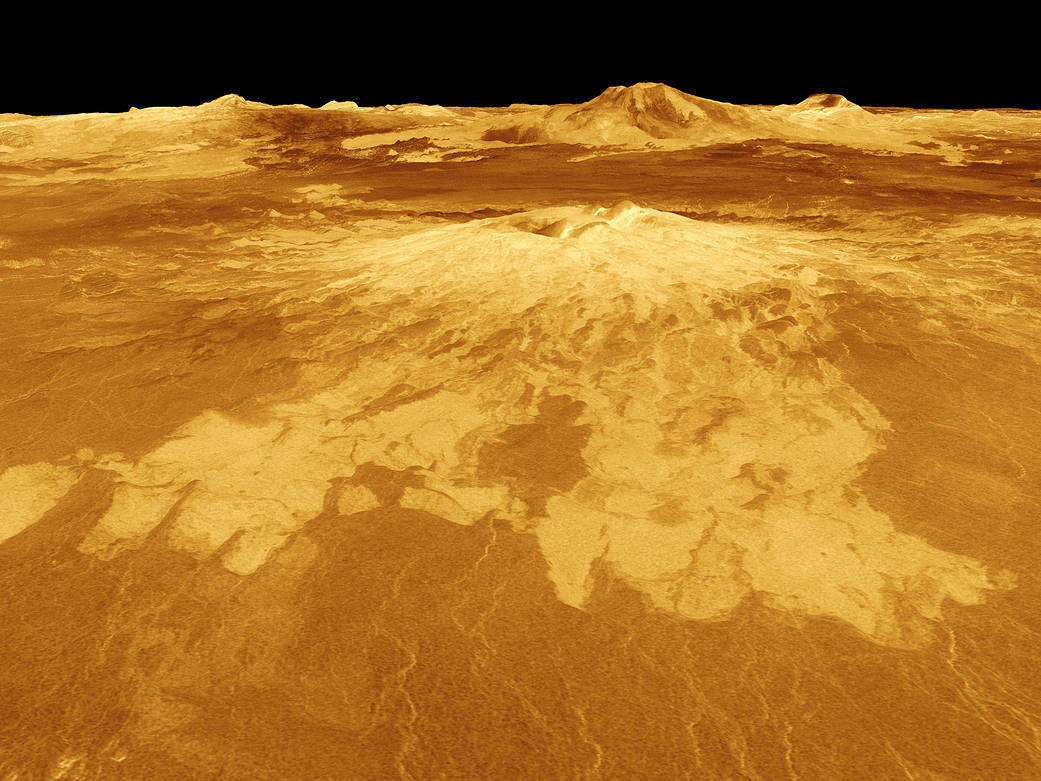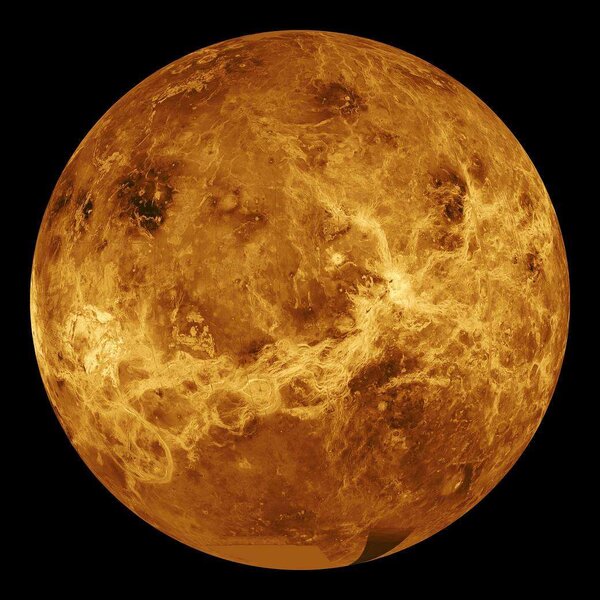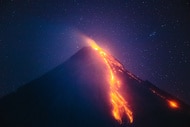Create a free profile to get unlimited access to exclusive videos, sweepstakes, and more!
Explosive volcanoes on Venus might be what spewed out all that phosphine

Phosphine in the atmosphere of Venus might have had some of us saying “aliens,” but now scientists are saying “volcanoes.”
Think geology instead of biology this time. Venus is thought to be a volcanically active planet, and if volcanoes on its surface aren’t spewing out gobs of lava today, they probably did in the recent past. New research by Cornell University scientists Ngoc Truong and Jonathan Lunine, who made observations with the ALMA and the James Clerk Maxwell telescope, recently published a study in PNAS, suggests that the gas gets into the upper layers of the Venusian atmosphere via explosive volcanism. That’s hot.
When phosphine was discovered in the atmosphere of Venus last Fall, the internet nearly exploded with speculation that the gas might have been produced by alien microbes, but such an inhospitable planet is unlikely to have life (at least as we know it) crawling anywhere near it. The surface alone is hot enough to melt lead at a scorching 847 degrees Fahrenheit. But exploding volcanoes?
“It's unexpected because under the usual conditions on Venus with low water and volatile contents (such as CO2)... Usually, volcanic eruptions are not explosive," Truong tells SYFY WIRE. “Lava would stay mostly on the surface like it does on Earth. If explosive volcanism occurs, it would have to source directly from the mantle where primordial water would have been concentrated.”
Volcanoes in places like Hawaii do not lose their temper quite as much as the volcanoes Truong and Lunine believe are belching out enormous amounts of stuff from the innards of Venus. Yellowstone boasts the only explosive volcanism on Earth that is not at the subduction zone, where tectonic plates slide under other tectonic plates and into the mantle, disturbing what lies beneath and triggering an eruption. Volcanoes on Earth belch out a staggering 130 million tons of carbon dioxide into the atmosphere, but even that is not enough to doom the planet. The same can’t be said for Venus.
Some scientists believe that Venus may have gotten to be the seventh circle of hell because it outgassed less than Earth. Both Earth and Venus are thought to have started out with atmospheres made mostly of carbon dioxide. On Earth, photosynthetic life converted most of that atmospheric CO2 that escaped from inside into oxygen, but Venus had other ideas. Its atmosphere remained a gaseous cesspool of CO2 that brought on an intense greenhouse effect. That keeps its surface at temperatures so high it is nearly impossible to land a spacecraft on it — and those that did perished.
“Even though a lot of chemical reaction rates are not well known under Venusian conditions, volcanism is a plausible hypothesis to explain phosphine, if it's there,” Truong says. “That's also a clue that, if phosphine is there, it would imply a recent or ongoing eruption on Venus."
Phosphine is thought to have come out of phosphide, which merges phosphorus with another element or group of elements. The phosphide explodes through the mouth of a volcano and then shoots to the atmosphere where sulfuric acid in Venus’ toxic clouds reacts with it to form the phosphine that made us suspicious of alien life-forms. Volcanoes on Earth barely have what it takes to produce enough phosphides to create that much phosphine in the atmosphere. The volcanic rate on Venus is much higher, which is why it was possible for some really temperamental volcanoes to have convinced us, at least for a minute, that it was aliens.
There are geological features on Venus that other scientists previously thought could have been signs of explosive volcanism. Since no one on Earth can land anything on Venus with much success, we don’t have a map that is hi-res enough to give us a closeup. But there are still two features that stand out. When the Venus Express spacecraft was still in orbit, it eyed something that appeared to be new lava. The lack of chemical modifications to this lava could have meant it was the aftermath of relatively recent volcanism, and there was enough of it to suggest that Venus might have gone through an entire era of volcanoes exploding.
Both Venus Express and Pioneer Venus also picked up on sulfur dioxide (SO2) in the atmosphere, which may or may not have escaped from volcanoes. If it did, despite there being other possible explanations floating around, it would fit with Truong and Lunine’s hypothesis.
“This is really an early ideal model, one needs to confirm whether phosphine is actually there or not,” Truong says. “I want to point out that the detection now is only tentative; further observations are needed.”















